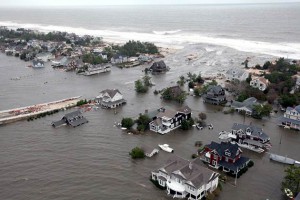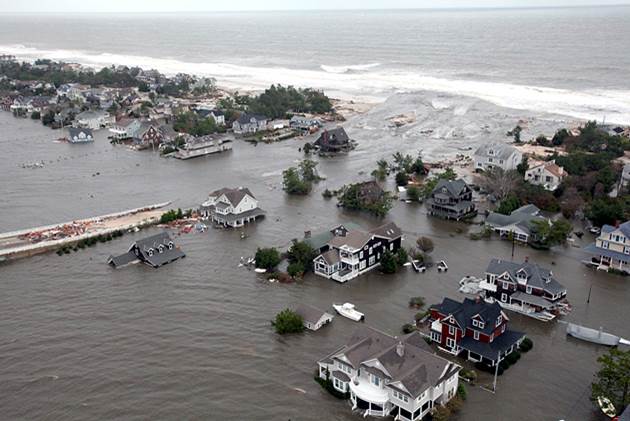New Jersey Future Blog
New Jersey Future Contributes Resiliency Planning Chapter to Planning Guide
October 12th, 2018 by Tanya Rohrbach
The New Jersey Chapter of the American Planning Association has published the 2018 edition of the only comprehensive print resource for an overview of New Jersey planning law, regulation and policy.
 New Jersey Future Planning Manager David Kutner, AICP, PP, co-authored the Resiliency Planning chapter of the 2018 edition of the Complete Guide to Planning in New Jersey, published by the New Jersey Chapter of the American Planning Association. Co-authors on the chapter include Hoboken Community Development Director Brandy Forbes, AICP; Hoboken Chief Sustainability Officer Jennifer Gonzalez, AICP; and Hoboken Principal Planner Caleb Stratton, AICP. With so many land use planning changes in New Jersey since the 2010 edition, particularly in the realm of sustainability, the need for this fourth edition of the guide was evident.
New Jersey Future Planning Manager David Kutner, AICP, PP, co-authored the Resiliency Planning chapter of the 2018 edition of the Complete Guide to Planning in New Jersey, published by the New Jersey Chapter of the American Planning Association. Co-authors on the chapter include Hoboken Community Development Director Brandy Forbes, AICP; Hoboken Chief Sustainability Officer Jennifer Gonzalez, AICP; and Hoboken Principal Planner Caleb Stratton, AICP. With so many land use planning changes in New Jersey since the 2010 edition, particularly in the realm of sustainability, the need for this fourth edition of the guide was evident.
This is the first edition to include a chapter on Resiliency Planning. As part of the Resource Planning section of the guide, the Resiliency Planning chapter highlights important issues, provides an overview of adaptation strategies for building resilient communities, offers examples of resources, and makes recommendations for integrating resiliency into traditional planning methods.
A key tenet of resiliency planning is to adopt a forward-thinking approach in the allocation of public resources or private investments. Too often communities are faced with difficult decisions when reacting to disaster or disturbance and are not necessarily aware of, or ready to commit to, options that will make their communities more resilient. Resiliency planning calls for making evidence-based decisions in anticipation of projected changing conditions or vulnerabilities. This mindset improves the adaptive capacity of communities and mitigates the impacts of a changing climate by breaking the repetitive build-rebuild cycle and replacing it with a resilience cycle in which a community evaluates and refines its adaptation strategy to guide the integration of resilience measures into local plans, policies, regulations and processes.
Resilience can be applied to the planning process at the local level by incorporating strategies directly into traditional master plan elements enabled by the Municipal Land Use Law, and into other standard local planning tools. For communities to build adaptive capacity, local master plans, redevelopment plans, infrastructure plans, preservation plans, capital improvement plans, and hazard mitigation plans are among the local documents that must be developed with consideration of a changing climate and the need for resiliency.
The chapter identifies several resiliency planning tools, including risk assessment and mapping tools that examine sea level rise, flood risk, community preparedness, energy planning, land-use scenarios and public health. However, as noted in the chapter, “information is not entirely inconsequential, but it is overrated as a change agent,” making the need for effective communication paramount. The chapter offers tips for understanding multiple perspectives and for motivating communities.
With the recent release of the Intergovernmental Panel on Climate Change Special Report, Global Warming of 1.5°C, it is apparent that action needs to be swift and meaningful if we wish to avoid highly detrimental outcomes of climate change. Decision-makers and stakeholders at every scale of governance will be affected and should become engaged. On a promising note, the Nobel Memorial Prize in Economic Sciences has been awarded to two economists working to incorporate sustainability and climate change into macro-economic modeling. Limiting global warming to 1.5°C is economically and technologically feasible, as long as the social and political will exists.
In New Jersey, strides have been made in development of risk assessments and in communication of those risks. However, the Resiliency Planning chapter points out that additional effort is needed, including the integration of climate risks into municipal planning, as well as state adoption of consistent sea-level rise projections, standardized requirements and guidance; development of a long-term state climate adaptation plan and a statewide coastal management plan; and a recommendation process for National Flood Insurance Program reform at the local level.
















